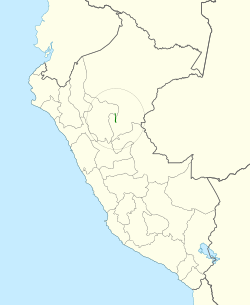| Scarlet-banded barbet | |
|---|---|
 | |
| Scientific classification | |
| Domain: | Eukaryota |
| Kingdom: | Animalia |
| Phylum: | Chordata |
| Class: | Aves |
| Order: | Piciformes |
| Family: | Capitonidae |
| Genus: | Capito |
| Species: | C. wallacei |
| Binomial name | |
| Capito wallacei O'Neill, Lane, Kratter, Capparella & Fox Joo, 2000 | |
 | |
| Synonyms | |
Scarlet-belted barbet | |

The scarlet-banded barbet (Capito wallacei) is a species of bird in the New World barbet family, Capitonidae. It is endemic to Peru. [2]
